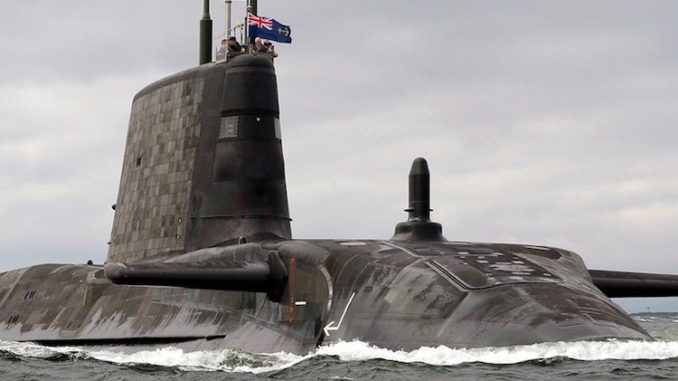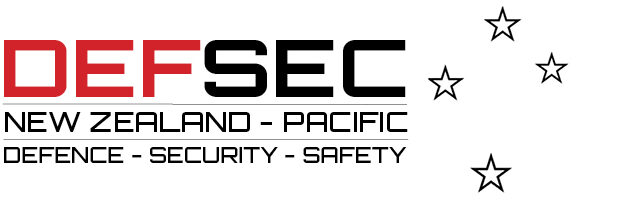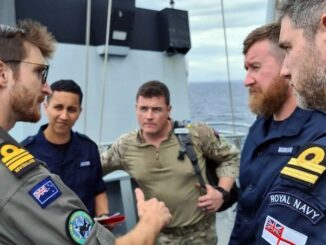
In the wake of last week’s AUKUS announcement, decisions around what to replace New Zealand’s Anzac class frigates with have become immediately more important, writes former Defence Minister Dr Wayne Mapp.
This article is part of Line of Defence Magazine’s Future Navy Series, featuring expert commentary on the capability decisions that will shape the future Royal New Zealand Navy.
Many readers will know that most of my Line of Defence articles this year have referred to the need to renew the naval fleet, most notably the Anzac frigates. I have been postulating that an all OPV fleet might be the answer, predicated on the basis that our prime interest is the South West Pacific, from Antarctica to the Equator. In particular I have mentioned the ice capable Harry DeWolf as a credible option.
AUKUS changes all that. The strategic settings of the Indo Pacific have been significantly changed by this new alliance. Australia, with its proposed fleet of nuclear submarines, will be moving into the top rank of middle powers. Britain will be projecting sea power into the Indo Pacific. It can’t be long before Britain joins the Quadrilateral Dialogue as a full member.
There can be no doubt that AUKUS has substantial implications for New Zealand. Australia is New Zealand’s only formal military ally. Britain is rediscovering its Commonwealth links. Together they will expect more from New Zealand. In particular, Australia will have expectations that New Zealand will take its alliance obligation seriously. It is worth remembering that alliances have obligations as well as benefits.
These obligations will be particularly focused on the Anzac ship replacement programme. This is not an issue that the government can continue to duck. I believe that it is imperative that the government to make its decisions on the replacement programme within the next two years, that is, before the next election. As we have seen with AUKUS, decisions can be made quickly if the will is there to make them.
So, what are the choices?
A key question can be dispelled immediately. In my view it is no longer credible to argue that the Anzac frigates can be replaced with OPVs. Our alliance partners would not see OPVs as being an appropriate recognition of our alliance obligations. Combat capable ships need to be replaced by combat capable ships.
Our alliance and Commonwealth partners have already decided to replace their ageing frigates, including the Australian Anzac-class frigates, with a common programme based on the British designed Type 26 frigate. Although our frigates are just as old, we chose not to join. Perhaps the $4 billion price tag per ship was just a bit too steep.
Nevertheless, the Type 26 decision is a pointer. The Five Eyes nations are keeping their key procurement decisions within their own family. This includes New Zealand, with the decisions to purchase the P8 Poseidon and the C130J Hercules. These two latter decisions were the first of the trio of the key procurement decisions for the NZDF. It has long been known that the Anzac decision would be the most difficult of the three decisions.
I had many such discussions in my office when I was Minister of Defence, as we were undertaking the 2010 Defence Review. Our view was that each of the major decisions would need to be successively made in different terms of parliament. Essentially the P3 replacement in the 2014 to 2107 term, the C130 replacement in the 2017 to 2020 term, and the Anzac replacement in the 2020 to 2023 term. As it happened, Ron Mark as Minister, made the first two decisions in the 2017 to 2020 term, to his considerable credit.
We are now in the 2020 to 2023 term. Covid is not an excuse to avoid the decision. All our partners have been afflicted by Covid and they can still make major defence procurement decisions.
If the Type 26 frigate is too expensive, are there other options? The Five Eyes family provides a guide.
Britain has designed the Type 31 frigate and it comes in both a high and low spec. The price ranges from $1 billion to $2 billion, depending on the spec. This is comparable in real terms to the price of the Anzac frigates.
The high spec ship, as ordered by the Royal Navy, has similar capabilities, albeit in a modern context, as the Anzac frigates. The low spec version is akin to an advanced OPV and would be substantially superior to New Zealand’s existing OPVs. But as Peter Greener has indicated, there is real merit in have a common platform for the fleet.
I appreciate that some will say that diving into specific platforms is the wrong way to go about these kinds of decisions. While that may apply in many cases, it is not always true. For instance, there was never any real doubt that the P3 Orion was going to be replaced by the P8 Poseidon. All the lengthy MOD and Treasury papers could not disguise that reality. The only real question was how many were to be purchased. Much the same might be said in respect of replacing the Anzac ships
I should note that New Zealand might still need at least one ice capable Harry DeWolf class of ship. New Zealand has real interests in the Southern Ocean and there are not many alternatives for that role. However, AUKUS makes it clear that this is not the big decision that now faces the New Zealand government. Getting on with replacing the Anzac ships is now the priority.









Commend the thought and emphasis on timelines and decision points. Having a broad idea of what’s on offer is also important. This piece has only touched lightly on high level user requirements though. When the C-130H was bought it could move, over meaningful distances, our helicopters, armored personnel carriers, Transport vehicles and the minimum support equipment. C-130Js cannot move our helicopters, armored personnel carriers or transport vehicles, or P8 support equipment over meaningful distances. We have solved our 1960s issues but only met some of today’s lower ranked requirements. The P8 is a good aircraft but at that cost there was no room to modernize methods like wide area search with satellite and UAS tech to target the response aircraft and yet Dr Mapp is saying there was never any real doubt that P8 and C130 would be the replacements.That’s because the solution was derived too far out from purchase, and commonality with partner nations traded above all other criteria. Commonality doesn’t have to be derived from identical platforms but from common effects provided they’re supportable. Leave the solutions for now, focus on what NZ needs to offer up to the international community and what aligns with NZ strategy. Weigh the requirements before shopping. NZ’s smaller budgets but enormous and diverse maritime operating environments may require different thinking (which does not have to mean bespoke either).
The frigates are required to be replaced, but they now have been given a LOTE (Life Of Type Extension) which takes them out to the early 2030s. That does give us a bit of breathing room. What is really required is more frigates because two is definitely not enough. We have just spent an 18 – 24 month period with both frigates in Canada under refit.
The Type 31 is ok but rather than going with the RN variant, we would be better going with the Babcock OMT Arrowhead with either CODLAD or CODLAG plus IEP, with the machinery mounted on floating platforms. The ships could be built in the HHI yards in South Korea reducing the build costs. Two ships would be built there. The first built and fitted out there, with the second hull and machinery delivered by 2027 and fitted out here. The subsequent two frigates would be ordered in 2029 and 31 respectively.
As far as sensors and weapons are concerned, a fitout similar to the Canadian CSC would be good because the CMS (Combat Management System) they use is the CMS330 which is the one currently used in the RNZN ANZAC Class frigates. The RCN will have Sea Ceptor integrated into, plus AEGIS, ESSM Blk II, SM-2, SM-6, NSM and SPY-7. We should get Lockheed Martin as the prime integrator because they are the prime integrator for the RCN CSC project.
That would give us GP frigates with capabilities similar to that of the three Type 26 variants being built by the RAN, RCN and RN. A combat fleet of four frigates would be the minimum that we require to face the new geopolitical and geostrategic situation. Acquiring two new build frigates ASAP would increase our capabilities quickly and then replace the existing frigates in the early 2030s with a second tranche of two new builds. Having the final three ships fitted out here increases local industry participation and allows the government to recover some of the acquisition costs through direct and indirect taxation. It will also increase economic activity in the region where the fitting out is done.
With regard to the SOPV it appears that the VARD 7-100-ICE-AOPV Harry deWolf class does not meet the requirements of the RFI that has been released. The VARD 9-203-ICE is more in line with the RFI request. Vard are building one for Chile, and it would meet our requirements.
The main thing though is that we really need an overarching comprehensive National Security Strategy that is all of government and includes resilience. It must not be something done in DPM&C but by a separate agency that reports to Parliament. It covers everything, Civil Defence, Health, Police, NZDF, fuel oil, medical and food reserves, transport, Air and Maritime Sea Lines of Communication etc. The NSS will inform the NZDF strategy and DCP. That’s our way forward.
Well said Dr Mapp. A point on cost if I may. The target Unit Procurement Cost for the Type 31 frigate is GBP250M. That includes the Royal Navy selected outfit of weapons, sensors, and command and control systems. We could reduce this be re-using some of the systems fitted to the upgraded Anzac class, including the CMS 330 combat management system and the Sea Crptor missile, both of which will still be viable for many years. However, we need to add non-recurring engineering and programme costs – GBP50M per ship is a safe-ish estimate. Let’s say that works out at GBP300M per ship. In 2021 NZD that’s 600M. Treasury would of course escalate that to what they would cost in the time frame that we would be paying for them. Let’s say we bought five ships, with two full outfits of weapons and sensors that could be cycled through the fleet. If the bare platform cost NZD300M, that’s a little over NZD2B all up in 2021 money. Your assessment of Type 26 UPC may be a little high, but even so, the difference in cost between a Type 31 (or similar) based fleet is stark, especially when you consider that with a Type 26 based fleet we would still have to replace the OPV. All this leaves aside sustainment costs, which would be much lower for the 5 Type 31 option.
A final point. Type 31 and Type 26 provide a good basis for comparison, but there are other European offerings that will be in the mix when the time comes.